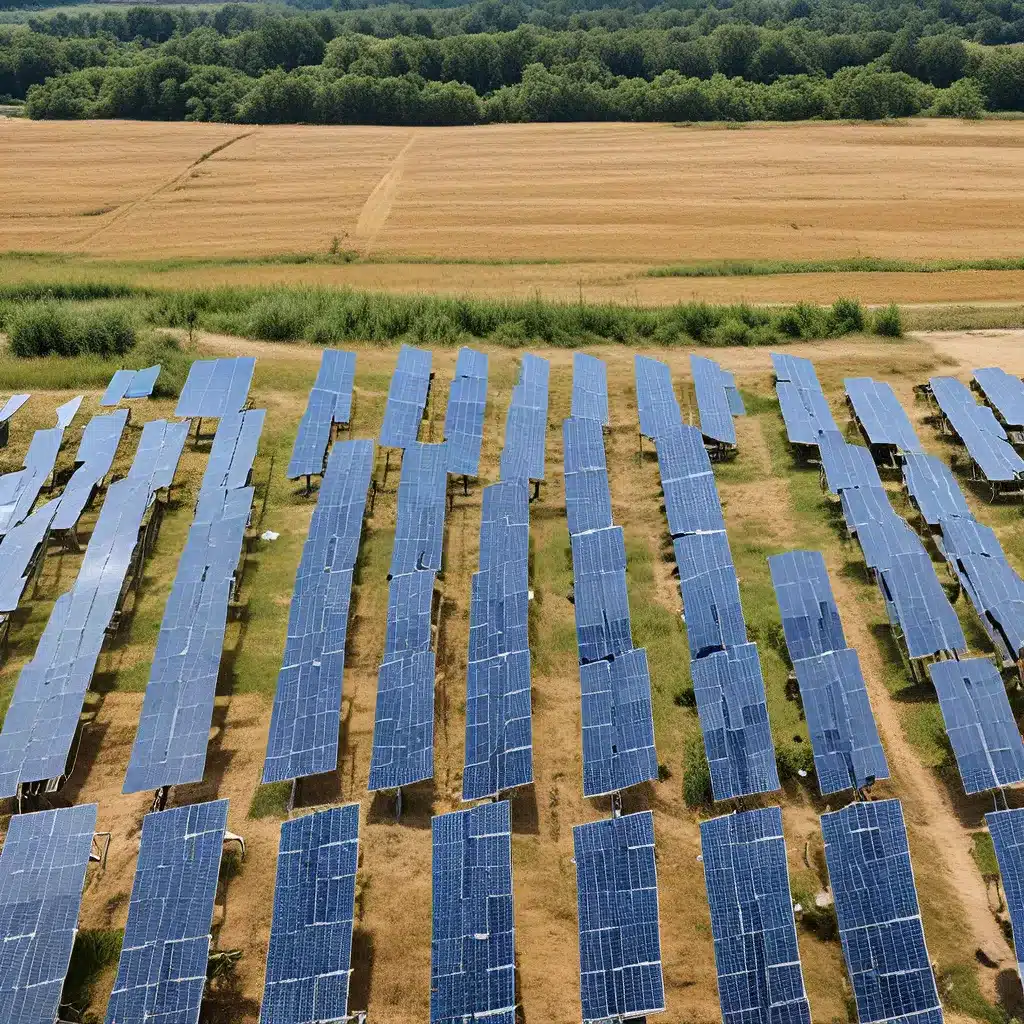
Harnessing the Sun for a Brighter, More Resilient Future
As I stroll through my local community, I can’t help but notice the growing number of solar panels adorning rooftops and dotting the landscape. It’s a visual testament to the transformative power of renewable energy solutions, and it fills me with a sense of optimism for the future.
You see, I used to live in a neighborhood that was all too familiar with the devastating effects of extreme weather events. Power outages, flooded streets, and disrupted services were a common occurrence, leaving our community feeling vulnerable and disconnected. But something shifted when we started embracing the power of the sun.
Renewable energy solutions, like decentralized solar systems, are now emerging as a vital tool in bolstering community resilience. These innovative technologies not only provide clean, reliable power, but they also empower local communities to take control of their energy needs and better withstand the challenges posed by climate change.
Empowering Communities through Decentralized Solar Solutions
Imagine a world where schools, healthcare facilities, and critical infrastructure are no longer at the mercy of the traditional grid. That’s the reality unfolding in many climate-vulnerable regions, thanks to the rise of decentralized solar energy solutions.
According to the World Resources Institute, these decentralized systems are increasingly being deployed to bring reliable electricity to community facilities, especially in areas where the existing grid infrastructure is fragile or non-existent.
By leveraging the power of the sun, decentralized solar solutions can ensure that essential services like healthcare, education, and emergency response remain operational, even during the most severe weather events. This not only safeguards the well-being of the community but also lays the foundation for long-term resilience and development.
Tailoring Solutions to Local Needs
Of course, implementing resilient renewable energy systems is not a one-size-fits-all approach. Each community has its own unique challenges, resources, and priorities that must be taken into account.
As the World Resources Institute points out, the design, installation, and maintenance of a decentralized solar system in a flood-prone region will differ greatly from the requirements of a lightning-prone area, even if they fall under the same government program.
Effective resilience planning starts long before the design stage, with a deep understanding of the local context and climate-related risks. Project implementers, policymakers, and donors must work closely with communities to ensure that the renewable energy solutions are tailored to their specific needs and vulnerabilities.
Leveraging Partnerships and Community Engagement
Building truly resilient communities is not just about the technology; it’s about fostering collaborative partnerships and empowering local stakeholders.
According to the Urban Sustainability Directors Network, successful resilience hubs often involve a diverse range of partners, including community organizations, government agencies, and private sector entities. These collaborations help to align resources, share knowledge, and ensure that the solutions address the community’s most pressing needs.
Moreover, active community engagement and capacity building are crucial for the long-term success and sustainability of renewable energy projects. When local residents are involved in the decision-making process and trained to maintain and operate the systems, they become true stewards of their own energy future.
Innovative Financing and Risk Management
Bringing resilient renewable energy solutions to life also requires innovative approaches to financing and risk management. Traditional funding models may not always align with the unique challenges posed by climate change and extreme weather events.
As the World Resources Institute suggests, project implementers and donors need to explore new financing mechanisms, such as risk-hedging models, that can help communities access the resources they need to build long-term resilience.
These innovative approaches may also involve partnering with local financial institutions, exploring crowd-funding platforms, or tapping into climate-focused investment funds. By thinking outside the box, we can unlock the full potential of renewable energy to empower communities and safeguard their future.
Embracing the Power of the Sun
As I look around my community, I’m filled with a renewed sense of hope and determination. The solar panels that dot our landscape represent more than just a source of clean energy; they are a symbol of our collective resilience and our commitment to a brighter, more sustainable future.
Through the power of renewable energy solutions, we are not only reducing our carbon footprint and combating climate change, but we are also empowering our communities to withstand the challenges that lie ahead. By tailoring these solutions to our unique needs, fostering collaborative partnerships, and exploring innovative financing models, we are building a foundation for long-term resilience and prosperity.
So, I encourage you to join me in embracing the power of the sun and exploring the renewable energy solutions that can transform our communities into beacons of resilience. Together, we can create a future where the lights never go out, and the path to a sustainable tomorrow is always illuminated.

